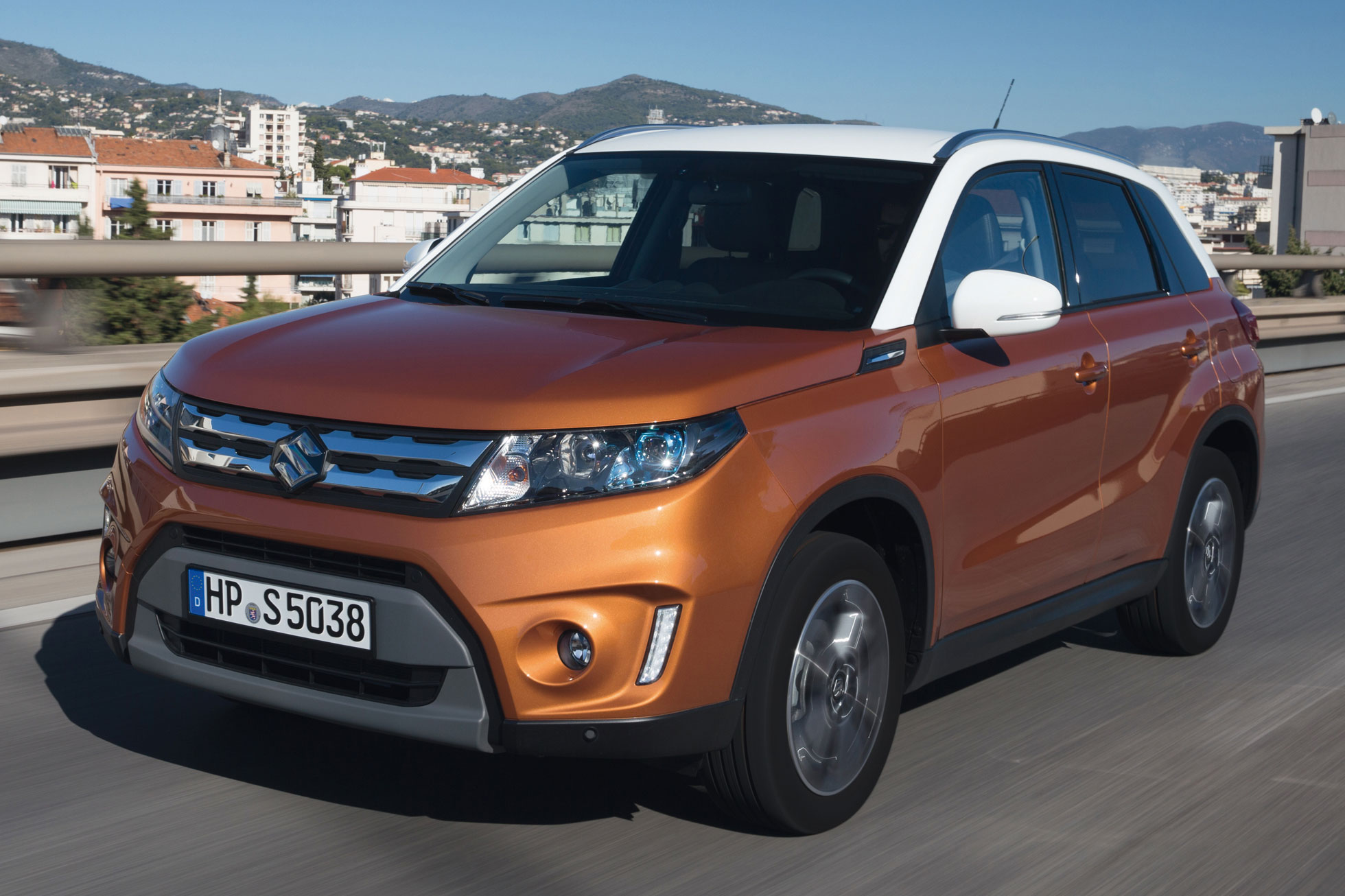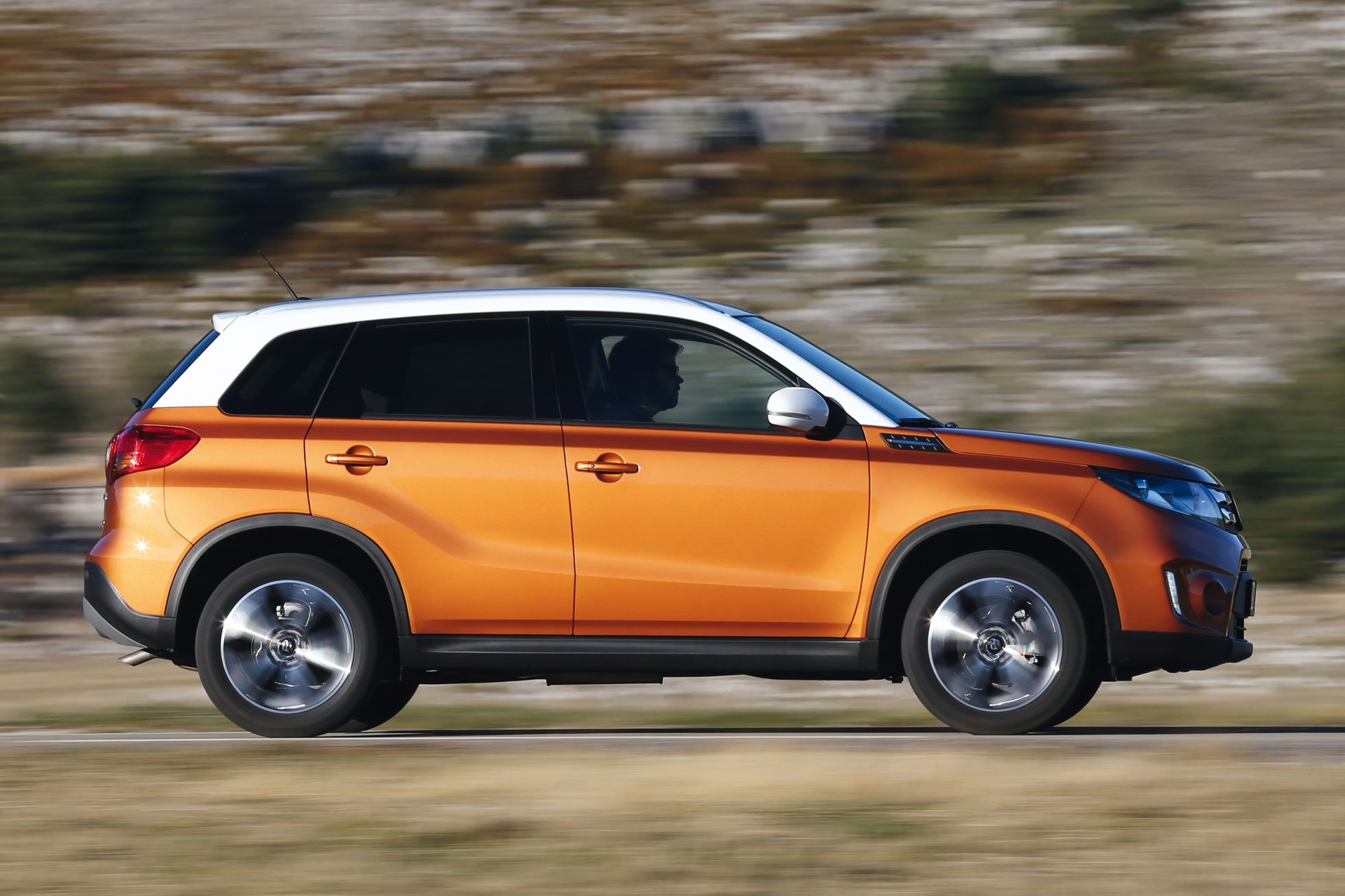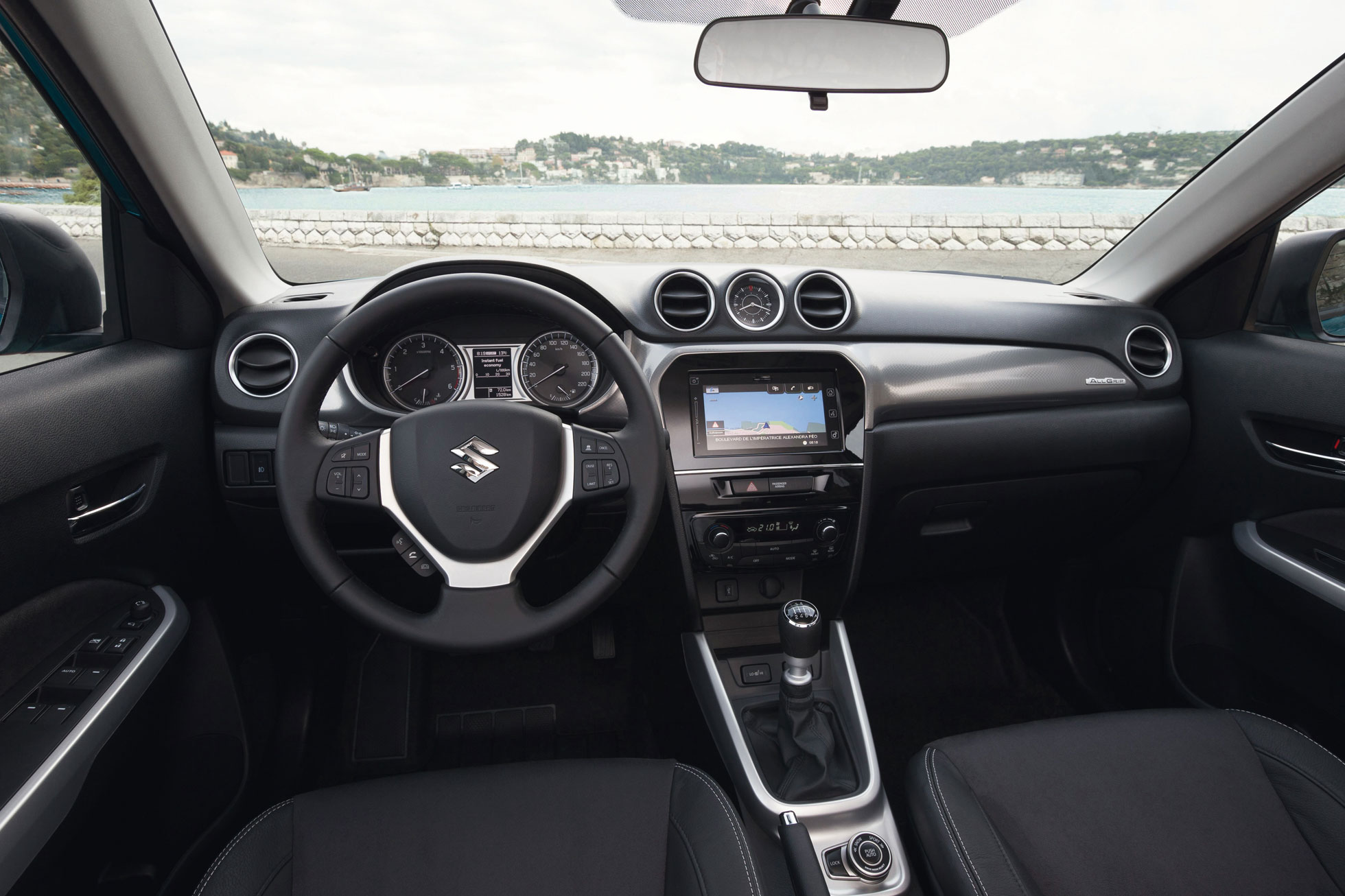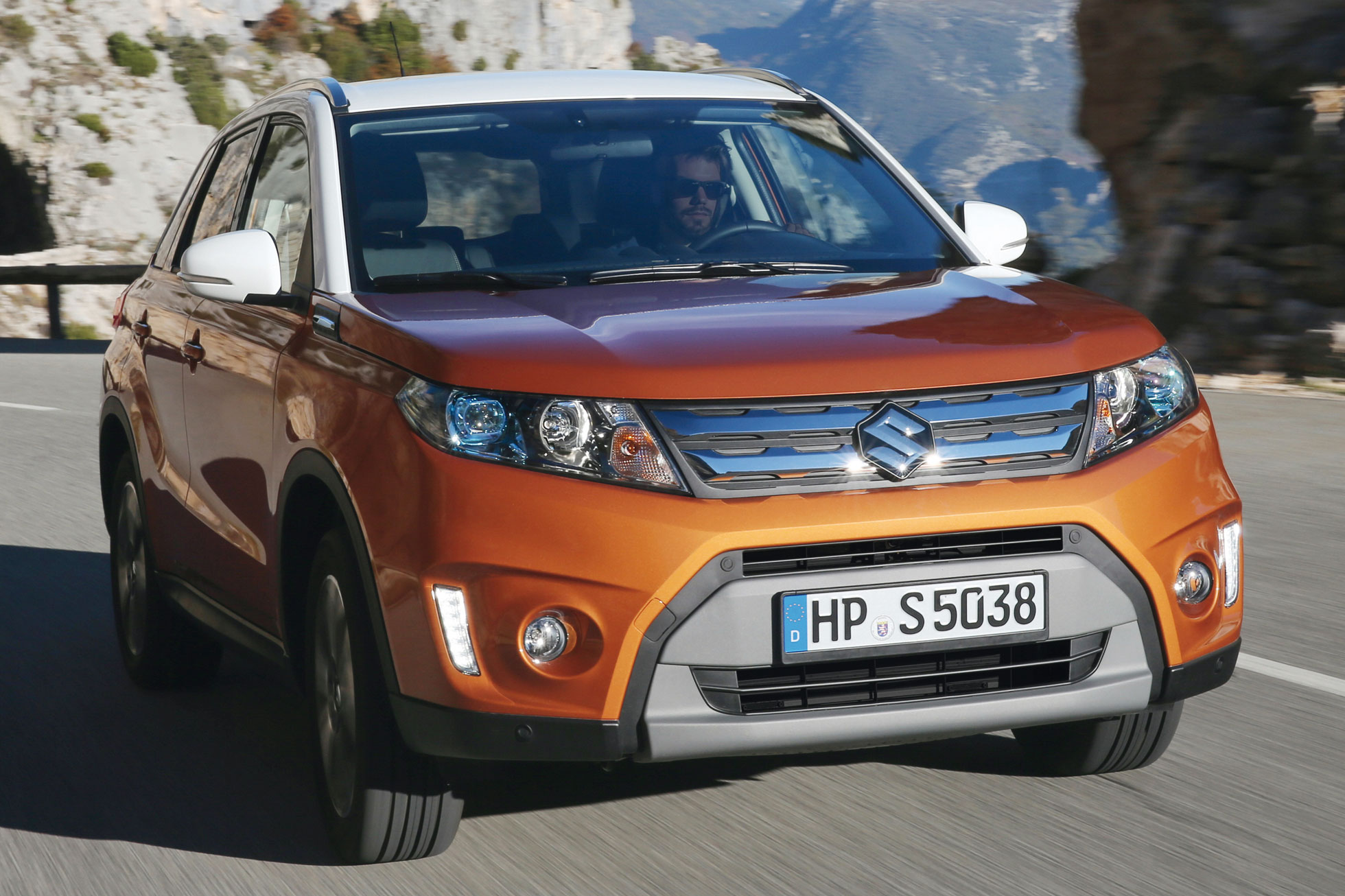New Suzuki Vitara combines brand heritage with funky looks and even off-road ability. Entry-level SZ4 is a bargain to be had.
Andrew Brady | February 2015
Suzuki has form for small, no-nonsense, reliable four-wheel drives. But we’re very much living in the time of the small crossover, when people care more about being able to buy the latest SUV that reflects their personality and is a boon to drive around town – off-road panache (and even brand heritage) is irrelevant.
Which explains why the Japanese car manufacturer has gone all trendy with its all-new Vitara. It’s dropped the ‘Grand’ from its name, and offers a variety of colour combinations and personalisation options to tempt youthful Nissan Juke and Renault Captur customers.
What’s the Suzuki Vitara like to drive?
But that doesn’t mean the Vitara has lost its off-roadability. The Vitara is unusual in its segment in that it can venture further than your average crossover, if you opt for the four-wheel drive Allgrip version. Around a quarter of buyers are expected to do just that, reckons Suzuki – a higher percentage than typical for buyers of similar vehicles (some manufacturers don’t even offer four-wheel drive in this segment), thanks largely to a strong brand following who’d like to use their Vitara for tackling snowy conditions or muddy fields.
We tried the Vitara on an off-road course on its European launch in Portugal. While not a particularly challenging route, a series of axle-twisters demonstrated the impressive axle articulation while descents showed off its hill descent system, fitted to all models fitted with Allgrip. While the obstacles weren’t challenging, the Vitara exudes a sense of confidence that it could shrug off even tougher obstacles. It’s a simple equation that Suzuki has always got so right with its four-wheel drives in the past – lightweight (the petrol Allgrip has a kerb weight as low as 1,160kg) combined more ground clearance than rivals (185mm). The side of a Welsh mountain shouldn’t be an issue.
But it’s on road where most will spend their time. The majority of part-time four-wheel drive models like this generally run with all (if not, most) of the power generally driven to the front wheels. Power is only diverted to the rear if a loss of grip is detected – and in many cases, it could be too late. The Vitara Allgrip is unusual in that it detects when your driving might result in a loss of grip (through mashing the accelerator and yanking the steering wheel, for example), diverting torque to the rear for additional stability.
As a result, the four-wheel drive Vitara Allgrip is a particularly safe and predictable handler – difficult to unbalance even when being particularly hamfisted and when road conditions are less than ideal. Drivers of the Vitara get plenty of feedback through the steering wheel – but most of the time that feedback is simply, “don’t worry, everything’s under control.”
Most buyers, however, will opt to save money on both purchase price and running costs by choosing the two-wheel drive version. This rarely feels less surefooted than the four-wheel drive – that lovely steering feel meaning you feel just as confident that the Vitara’s going in the direction you want.
Sure, there’s a hint of bodyroll when you start to throw the Vitara around. You wouldn’t get the same in the Swift supermini. But it’s a crossover SUV with genuine off-road ability – there has to be sacrifices.
We tried diesel and petrol versions of the Vitara – both 1.6-litre engines boasting 120hp. Around town the petrol engine is a competent engine – quiet, and eager enough for city traffic. As the roads open up it does start to feel a little asthmatic, while on the motorway you find yourself dropping down a gear for hills, and wishing there was a sixth gear when cruising at higher speeds.
The diesel is a much more sensible choice for those who plan to spend most of their time out of town. The extra torque (236lb ft compared to 115lb ft) means it feels considerably sprightlier at higher speeds, while the standard sixth gear helps refinement (and economy).
Does the Suzuki Vitara feel like a cut-price Evoque?
Suzuki has clearly spent time and money trying to perk up the interior with splatterings of colour along with snazzy details like the circular clocks and air vents.
It’s difficult to hide that it’s clearly been built on a budget, however. The plastics are typically Japanese – hard to the touch, and not particularly nice to look at.
If you can live with that, you do get good levels of equipment and practicality for your money. Even the base-spec SZ4 offers features such as hill hold control as standard, as well as cruise control and a DAB radio with Bluetooth.
Move up to the top-of-the-range SZ5 and you start to get levels of equipment to rival much more premium vehicles. You even get a radar braking system, which detects if it thinks you’re approaching a vehicle in front too fast and has a number of features to prevent a potential collision – from an audible warning to automatic braking.
Automatic headlights and rain sensing wipers are also standard on the SZ5, as are suede seats and a sliding panoramic sunroof – both of which do a good job of lifting the Vitara’s slightly glum cabin.
Its slightly boxy shape lends itself to a roomy interior – there’s space in the back for a couple of adults, while 375 litres of bootspace combined with easy access will make transporting awkward loads a doddle.
Verdict: Suzuki Vitara
The Vitara has its faults, but traditional Suzuki buyers will value its safe and secure driving experience. Sure, not everyone will be keen on the personalisation options – but we can confirm, it looks good in plain black or white.
The amount of equipment you get even for the most basic £13,999 model is impressive. You could spend similar money on a supermini – but going for the Vitara won’t leave you missing out on luxuries and gadgets that a high-end Fiesta offers.
Combine these qualities with funky new looks and reputation for reliability, and Suzuki fully deserves to tempt new buyers from more mainstream brands.
Rivals: Suzuki Vitara (2015)
- Nissan Juke
- Renault Captur
- Skoda Yeti
- Fiat 500X
- Jeep Renegade
Suzuki has a tough time on its hands if it wants the Vitara to take on the darling of the small crossover segment, the Nissan Juke. Sure, the Nissan Juke might be funkier and appeal more to urbanites, but those who want their mini SUV to have a bit of credibility will appreciate the Vitara. The same can be said for the Captur, which offers similar personalisation themes. The Yeti offers robustness and practicality – but at a cost – while the Fiat 500X has love it or hate it looks. You’ll pay more for a Jeep Renegade when it goes on sale, but for that you’ll get a much more premium vehicle.
Specification: Suzuki Vitara
Engine: 1.6-litre petrol, 1.6-litre DDis diesel
Gearbox: Five/six-speed manual, front or four-wheel drive
Price from: £13,995
Power: 120hp
Torque: 115 – 236lb/ft
0-62mph: 11.4 – 13.0 seconds
Top speed: 112mph
MPG: 49.5 – 70.6mpg
CO2: 106 – 131g/km



